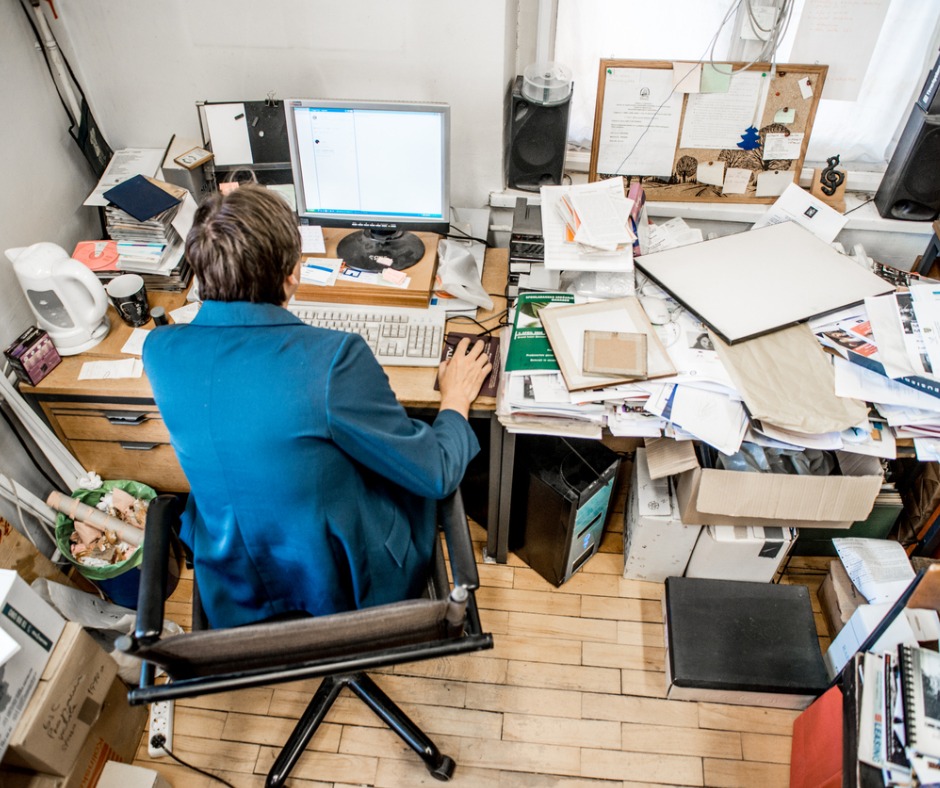
Introduction: The Importance of a Tidy Workspace
As interior designers, we often find ourselves surrounded by fabric swatches, design boards, and various materials that can quickly turn our creative sanctuaries into chaotic spaces. Maintaining a clean and orderly workspace is crucial not just for productivity but also for fostering creativity and leaving a positive impression on clients. Recently, our community members shared their experiences and tips on keeping their workrooms tidy. In this blog post, we’ll explore these insights and provide practical strategies to help you keep your workspace organized and efficient.
The Importance of a Clean Workroom
An organized workroom significantly impacts your efficiency and creativity. A clutter-free environment allows you to focus on your projects without distractions, enhancing the quality and speed of your work. Moreover, a tidy workspace leaves a positive impression on clients, reinforcing your professionalism and attention to detail.
Daily Maintenance: The Foundation of Organization
Integrating daily maintenance routines into your schedule is crucial for preventing clutter buildup. Simple actions like tidying up at the end of each day ensure that your workspace remains manageable and ready for the next day’s tasks. By dedicating just a few minutes each day to cleaning, you create a habit that keeps your workroom in a constant state of order.
Weekly and Monthly Cleaning: Deep Clean and Reorganize
In addition to daily tidying, set aside specific times each week or month for thorough cleaning and reorganization. This practice helps reset the space and ensures it remains functional. Regularly filing documents, organizing materials, and performing deep cleans can make a significant difference in maintaining an orderly environment.
Leveraging Team Effort: Sharing the Responsibility
Keeping a workspace clean is a team effort. Encourage everyone in your studio to contribute to maintaining order. Assign specific tasks to team members and create a cleaning schedule that everyone follows. Sharing the responsibility not only makes the task less daunting but also fosters a sense of collective ownership and pride in the workspace.
Using Organizational Tools: Invest in Efficiency
Investing in organizational tools like clear bins, labeled containers, and dedicated storage spaces can streamline your workflow. These tools help keep materials sorted and easily accessible, saving time and reducing frustration. A well-organized workroom enables you to focus more on design and less on searching for items.
Insights from the Design Community
@amhadfreemaninteriors
“I don’t keep a library. Every project gets two samples. One set we send to the client and the other goes back to the vendors once the project is complete. No fuss and everything stays clean and tidy.”
- Our Take: Ahmad’s minimalist approach of using temporary samples avoids clutter while promoting sustainability. Returning excess samples keeps the workroom tidy and ensures access to the latest materials
@jpdesignshome
“No best practice this is one of the many downfalls of this wonderful business! Designers are creative and love to pull and make piles of fabric and pictures and samples! We are not great at organizing them back in order for the next time. Guilty as charged”
- Our Take: Jenney’s insight acknowledges the creative chaos designers embrace while struggling with reorganization. Finding a balance between inspired exploration and restoring order is key.
@m.i.n.t_interior_design
“We hired a home organizer to set everything up in sections and categories, with labelled bins. We also make sure to call on our sales reps to purge the disco’d samples for us every few months. As you come across them, get rid of any samples that you haven’t used in a set amount of time (1 year, 2 years?). We actually reached out to a local care home for the elderly and people is disabilities and they love taking our fabric and tile samples for crafts!”
- Our Take: @m.i.n.t_interior_design’s approach utilizes professional organization, regular sample purging, and donating unused materials to care homes, creating an efficient and sustainable system for maintaining a tidy workspace.
@hudsonhome
“I’m 50% left brain/50% right brain so I’m equally as organized as I am creative. I need my work environment to be in order to welcome the creative energy. I consider myself lucky!”
- Our Take: Shelley’s balanced left-brain and right-brain approach allows an orderly workspace to fuel creativity – an advantageous mindset for designers.
Conclusion: Finding What Works for You
Maintaining a clean and organized workroom is an ongoing process that requires effort and dedication. By implementing daily routines, leveraging team support, and using organizational tools, you can create a workspace that fosters both creativity and efficiency. Whether through professional help, periodic purging, or turning cleaning into a fun activity, there are numerous strategies to maintain a tidy environment. The key is finding what works best for you and your team, ensuring that the workroom remains a place of inspiration and productivity.


